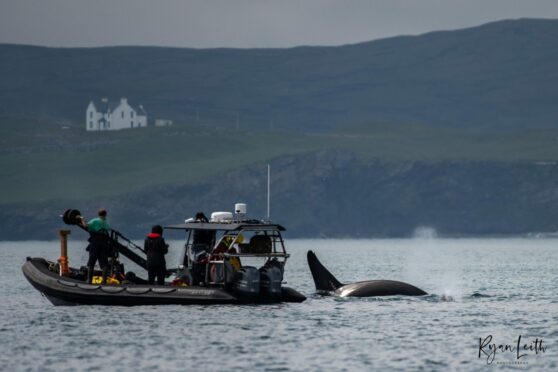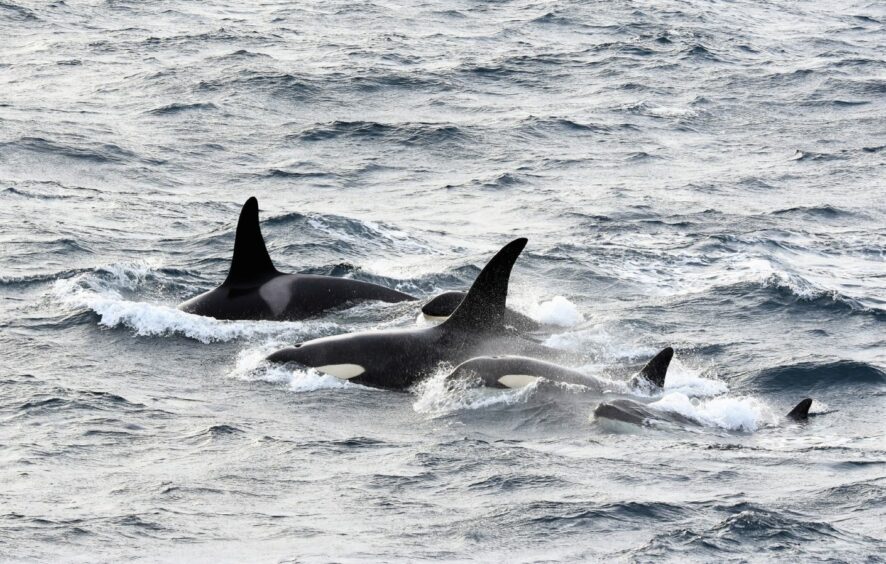A group of Shetlanders have assisted filming crews with capturing killer whales for a new BBC series.
Wild Isles is narrated by Sir David Attenborough and explores how woodland, grassland, freshwater and ocean habitats support local wildlife across the British Isles.
Filming crews spent weeks, over three years, documenting killer whales using the vast network of Shetlanders who alert them to sightings around the coast.
One local who assisted with recording incredible drone footage of several whale pods was ecologist and photographer, Richard Shucksmith.
Mr Shucksmith was able to use his contacts with other islanders to help guide crews to the whale’s location to film the notoriously elusive species.
Most of their tips came from the Shetland Cetacean Whatsapp Group run by wildlife enthusiasts Hugh Harrop and Karen Hall.
He said the presence of killer whales is an indicator of how healthy the waters are, which keeps the food chain balanced.
He said: “It’s really important to protect these species as they are the mega-fauna of the sea.
“The killer whale is ultimately the top predator, it’s number one, but they also give you a real sense of the health of the sea, so if you have good healthy populations of top predators then that means the sea has to be in good condition with lots of prey.
‘It’s exciting, it’s heart-stopping stuff’
“Trying to protect these animals is quite difficult because they move over such large areas, it’s not easy to do
“However, the way we are able to understand their movements is down to people living on the islands and having an interest in whales and dolphins.
“In particular, there is something about orcas that really draws people in. They are spectacular, once you see them hunting for seals along the coast, it’s exciting, it’s heart-stopping stuff.”
Shetland has become a prime destination for whale-watching and experiences a boom in the summer during June and July when they hunt for seals who are pupping along the shore.
Sightings of whales are well documented in the Scottish Orca Catalogue using “citizen science” to help keep track.
Mr Shucksmith and his colleague Nick McCaffrey were also able to capture drone footage of orcas when filming crews were not around.
They worked with crews every day for five-week periods over three years to get footage of the whales, including some up-close encounters.
They used specialised equipment, such as powerful cameras mounted to rigs on small boats, which required permission for NatureScot.
The BBC One show, Wild Isles, will air tonight at 7pm.



Conversation